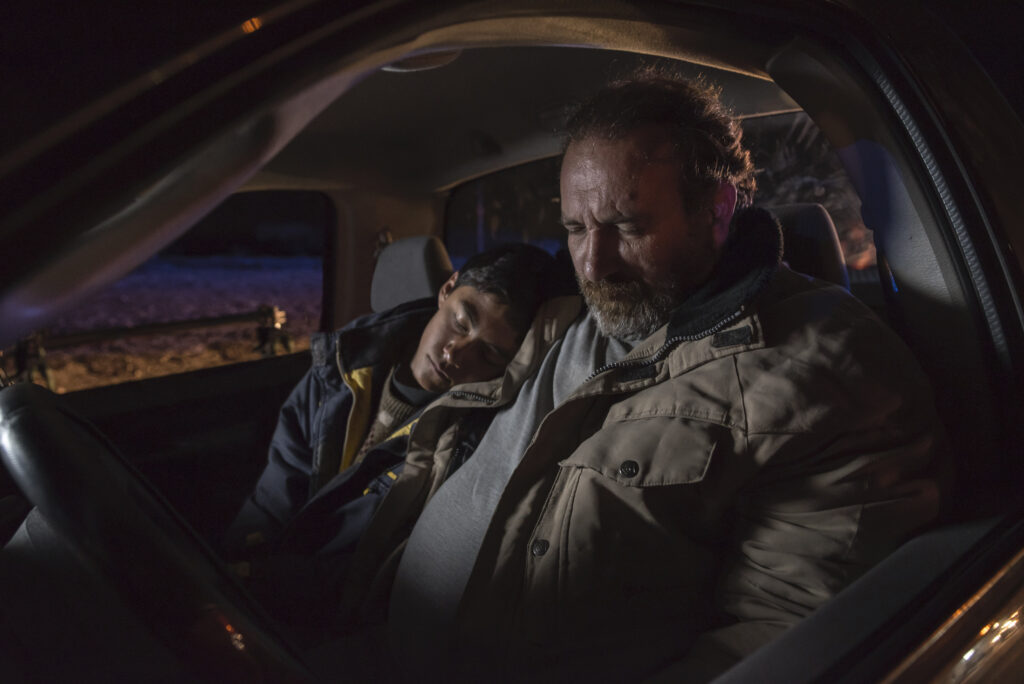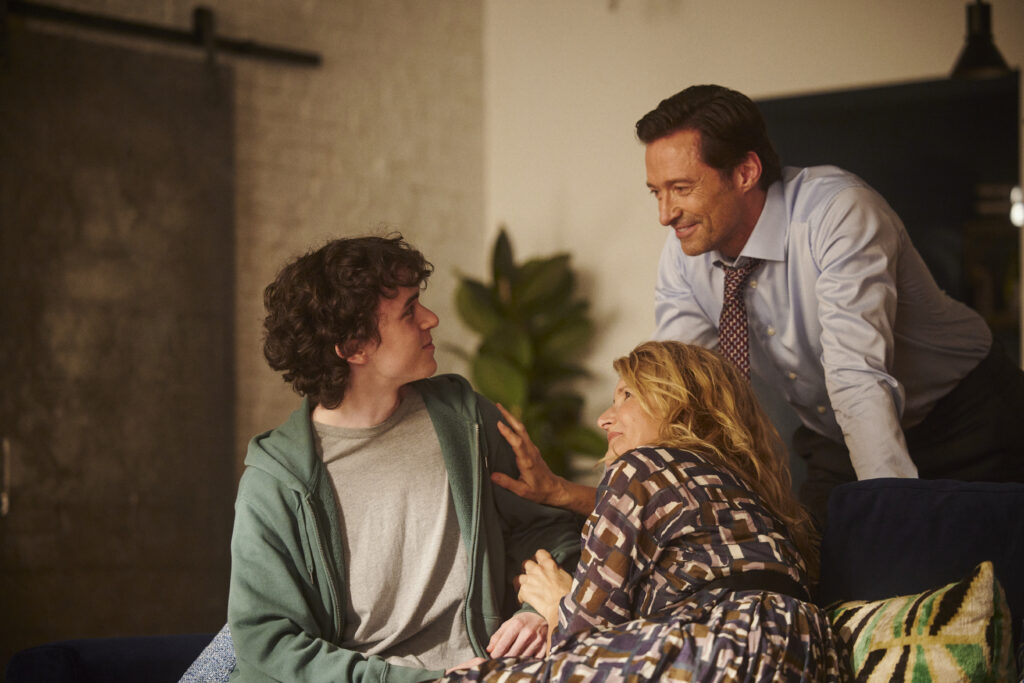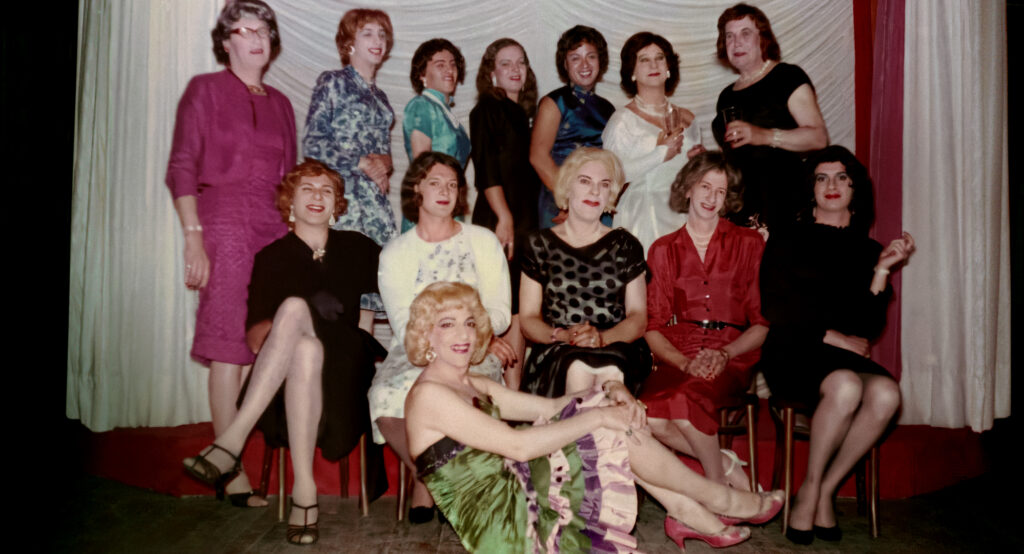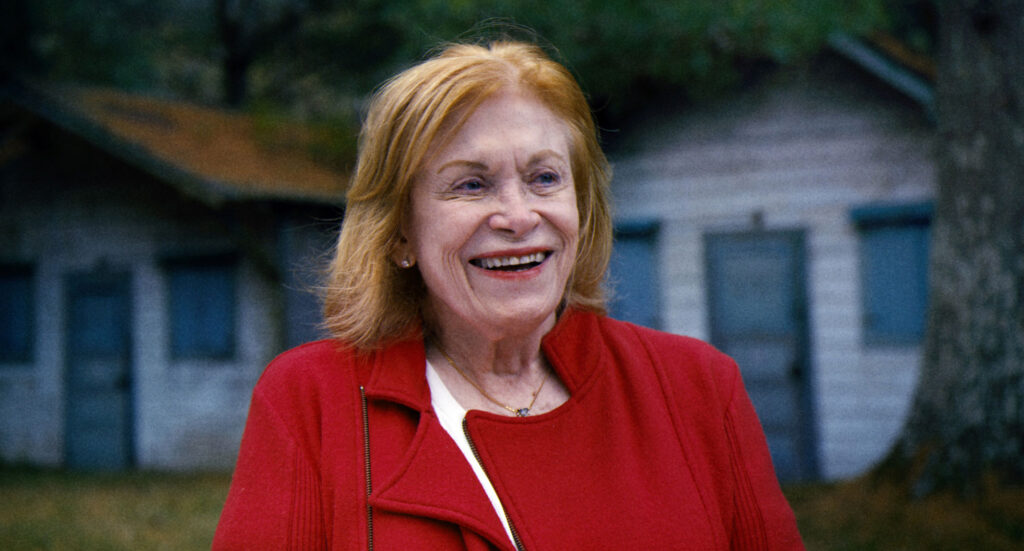May 30, 2023
by Carla Hay

Directed by Paul Schrader
Culture Representation: Taking place in New Orleans, the dramatic film “Master Gardener” features a predominantly white cast of characters (with some Latin people, African Americans and Asians) representing the working-class, middle-class and wealthy.
Culture Clash: A horticulturist at an elite garden estate gets emotionally involved with the grand-niece of his wealthy employer, while he tries to move on from his criminal past as a murderous white supremacist.
Culture Audience: “Master Gardener” will appeal primarily to people who are fans of stars Joel Edgerton and Sigourney Weaver; filmmaker Paul Schrader; and solidly acted movies about people seeking redemption through reinvention.

“Master Gardner” has a simmering intensity that show signs of boiling over into an intensely memorable film, but the movie puts restraints on itself. This restraint is not going to satisfy many people who see this movie, which is mostly about two people who are trying to forget their past while they have a growing attraction to each other. Some of the dialogue and scenarios are a little too trite for what this drama is trying to say about redemption, but the story and performances overall have enough to maintain the interest of most viewers. Some viewers might expect more melodrama and more suspense.
Written and directed by Paul Schrader, “Master Gardener” (which was filmed on location in New Orleans) has a trailer that reveals about 80% of the movie’s plot. The movie had its world premiere at the 2022 Venice International Film Festival, before making its way to other film festivals that year, including the New York Film Festival. It’s a movie that falls right in with Schrader’s pattern of directing films about somber male loners who are looking for some kind of redemption. (See 2018’s “First Reformed” and 2021’s “The Card Counter.”)
In “Master Gardener,” middle-aged bachelor Narvel Roth (played by Joel Edgerton) has a solitary and quiet life as the live-in horticulturist of Gracewood Gardens, located on a lavish estate. Narvel supervises a small staff of about four people. His employer is the haughty and demanding Norma Haverhill (played by Sigourney Weaver), the sole owner of the estate.
Narvel is not a highly educated or intellectual person, but he is a very knowledgeable horiculturist. In the beginning of the movie, he’s seen looking at pictures of flowers and gardens in the bedroom of his modest guest house on Norma’s property. In voiceover narration, he recites the differences between French gardens (also known as formal gardens), English gardens (also known as informal gardens) and wild gardens.
In this voiceover narration, Narvel shares his philosophy on horticulture: “Gardening is a belief in the future—a belief that things will happen to plan, that change will come in due time.” Narvel is not someone who is talkative or who shows his emotions easily, except when he’s talking about gardening. It’s his passion, and he lights up whenever he gets a chance to talk about anything related to gardening.
Narvel channels his energy into being the best gardener that he could possibly be. However, as already revealed in the “Master Gardener” trailer, Narvel has a very ugly past: He used to belong to a white supremacist militia group. And he used to murder people just because they weren’t white. Narvel also murdered people in his own white supremacist group if any of them did something that angered him. Narvel’s chest and back are covered with tattoos, including multiple Nazi swastikas on his back.
Flashbacks and current scenes reveal that Narvel ended up becoming a star witness in the prosecution of many of his former cronies in the militia group. As a result, Narvel went into the FBI’s witness protection program, where he got an entirely new name and identity. Narvel’s birth name is briefly mentioned at one point in the movie. The FBI agent who has been assigned to keep in touch with Narvel is Oscar Neruda (played by Esai Morales), who has built a trustworthy relationship with Narvel.
Very few people in Narvel’s current life know about his disturbing past. Norma knows that Narvel is an ex-con, but she doesn’t really want to know the details. Every year, Gracewood Gardens has a big spring charity auction on the premises. One day, Norma tells Narvel that this year’s auction will probably be her last because she’s having some “health issues.” (Norma doesn’t elaborate, and Narvel doesn’t ask for more information.)
Norma does not have any children, so her thoughts have been preoccupied with who will take over Gracewood Gardens if she is dead or unable to oversee the estate for other reasons. She wants to keep the property in the family. Norma tells Narvel that she has invited her estranged grand-niece Maya Core (played by Quintessa Swindell) to live and work on the estate. Narvel has been tasked with teaching Maya how to be a horticulturist.
Norma explains to Narvel that Maya is the daughter of Norma’s deceased niece, who was also named Norma. Norma Jr., who died of a drug overdose, was the daughter of Norma Sr.’s sister Betty. Maya, who is in her 20s, grew up in a single-parent household, dropped out of school. and “fell in a with a bad crowd,” according to Norma. Maya’s father is described as a deadbeat dad, who abandoned Norma Jr. and Maya when Maya was very young.
During this apprenticeship, Maya lives in a small guest house on the property. Norma tells Narvel that Maya will be given a minimum-wage salary and car service. Maya will have to provide her own lunch when she’s on the job. Norma says that Maya will get incremental raises to her salary. Norma is subtly racist and doesn’t seem entirely comfortable with the fact that Maya is biracial. (Maya’s father is apparently African American.)
When Maya arrives at the estate, Narvel is cordial and professional with her. Norma avoids interacting with Maya as much as possible. As far as Norma is concerned, Maya is someone who is “the help,” not a family member whom Norma fully accepts. Norma thinks that Maya needs to earn her trust and at least become a skilled gardener if Norma is ever going to consider leaving any care of Gracewood Gardens to Maya. Norma eventually invites Maya to have dinner with her and Narvel inside the estate’s main house, but control freak Norma has chosen the dress that she wants Maya to wear during this dinner.
Narvel soon finds out that Maya has a drug problem, just like Maya’s mother. Although it’s never shown in flashbacks, Narvel has a history of drug abuse too. He lives a very clean and sober life now, but he and Maya both easily figure out that they’re no strangers to drug use. Maya’s risky lifestyle ends up catching up to her, and Narvel gets involved in her problems.
What isn’t really shown in the trailer for “Master Gardener” is that Maya has been trying to avoid two sleazy drug dealers who hang out with each other. The leader of this duo is Robbie Gomez, nicknamed R.G. (played by Jared Bankens), who was also the drug dealer for Maya’s mother. R.G.’s sidekick is a guy named Sissy (played by Matt Mercurio), who is R.G.’s constant companion. R.G. is very possessive of Maya and is practically stalking her.
Maya was living in a run-down, crime-ridden area before she moved to Norma’s estate. Maya doesn’t tell Narvel the details of her relationship with R.G., but she insists that R.G. is not her boyfriend. Based on the way R.G. is acting, it’s implied that Maya has a history of having sex with R.G. for drugs, but he wants to control her like a possessive lover. And when Maya shows up to work one day with fight injuries on her face and confesses to Narvel that R.G. caused those injuries, it’s also very easy to predict how Narvel will react when he sees R.G. and Sissy.
As already shown in the “Master Gardener” trailer, Narvel gets romantically involved with Maya, but it doesn’t happen right away. At first, he resists Maya’s attempts to seduce him, partly because he doesn’t want to get in trouble for crossing certain boundaries, and partly because he doesn’t want Maya to see his neo-Nazi tattoos. But eventually, Maya and Narvel become sexually intimate, after he tells her that he used to be a racist. This sexual consummation scene is meant to show Narvel completely vulnerable and submissive to Maya, as a way to contrast with the life he used to have as a violent white supremacist.
It’s a complicated situation for Narvel, because he has been having sex with Norma, who considers their sexual trysts as part of his job requirement. It will make some viewers uncomfortable to see the messiness of these boss-subordinate sexual relationships, with big age gaps for these sex partners. However, “Master Gardener” isn’t intended to be a glossy romance story. If Norma finds out about Narvel and Maya’s growing affection for each other, things might not end well for Narvel and Maya. This part of the movie is very easy to predict.
What the movie conveys with considerable autheticity is how lonely and emotionally damaged people find ways to connect with each other. Narvel, Maya and Norma are each struggling with their personal issues. And each person, in his or her own way, is trying to put up a façade of “I can handle it” toughness. Maya and Narvel’s relationship doesn’t come across as “soul mates forever,” but more like, “I want to be with this person at this point in my life, and we’ll see what happens.”
Edgerton’s performance might strike some viewers as being very dull, but it’s actually a very accurate depiction of someone who has had to numb his emotions for a very long time. Considering that Narvel had to completely change his identity, there’s a somewhat silent identity crisis that Narvel goes through in the movie. Maya awakens some feelings in Narvel that Narvel hasn’t had for a very long time. And he’s decided he’s not going to run away from those feelings.
As for Maya, her personality is combination of being street-smart and being immature. Swindell’s performance looks authentic in how she portrays this complex character. The title of the movie is “Master Gardener,” so everything is told from Narvel’s perspective. However, the movie could have explored a little more about Maya and the life she had before she met Narvel. Weaver is solid in her role as prickly Norma, but Weaver has played this type of domineering snob many times before in other movies.
“Master Gardener” has some fantasy sequences involving flowers blooming in a heightened reality that’s almost psychedelic. These whimsical scenes don’t quite fit the gritty tone of the rest of the story. It’s also an uneven film, in terms of how much it wants to reveal about Narvel’s past. Viewers find out if Narvel ever got married or had children before his identity was changed.
The main reason why “Master Gardener” doesn’t sink into complete mediocrity is the principal cast members’ talent in handling their scenes. Ultimately, “Master Gardener” is worth watching as a character study of a violent ex-con who can’t entirely leave his thug ways behind. However, the movie doesn’t have much that’s insightful about the extreme changes in lifestyle and mindset that Narvel had to go through to become a former racist.
Magnolia Pictures released “Master Gardener” in select U.S. cinemas on May 19, 2023.


















